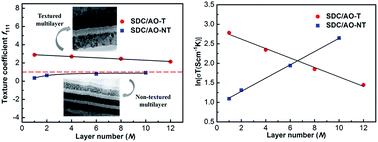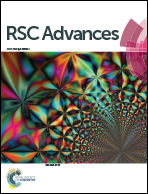Contrary interfacial effects for textured and non-textured multilayer solid oxide electrolytes
Abstract
The relationship between the microstructure and the conductivity for nanocrystallized oxygen ionic conducting thin films has been receiving great interest since it provides guidelines for designing electrolytes with high performances which might find applications in fuel cells and oxygen and fuel separation membranes. Here, we present a strategy for using the multilayered structure to tune the microstructures and ionic transport properties of solid electrolyte. Textured and non-textured Ce0.8Sm0.2O2−δ/Al2O3 (SDC/AO) solid electrolyte multilayers were prepared, and the dependence of conductivity on layer number was studied. We found that non-textured and textured multilayers show a positive and a negative interfacial conduction contribution to the total ionic conductivity, respectively. The decrease of conductivity with the increase of layer number for textured SDC/AO was attributed to that the multilayered structure introduces random grain orientations to the interfacial region which results in more pronounced grain boundary blocking effects. In contrast, non-textured SDC/AO show rich structural defects in the interfacial regions which facilitate the oxygen ionic transport and lead to a higher ionic conductivity. These insights into the effect of the interfacial interaction on the structure and the conductivity allow a better control of the electrical properties of multilayered electrolytes, which might foster their applications in electrochemical devices operable at lower temperatures.


 Please wait while we load your content...
Please wait while we load your content...